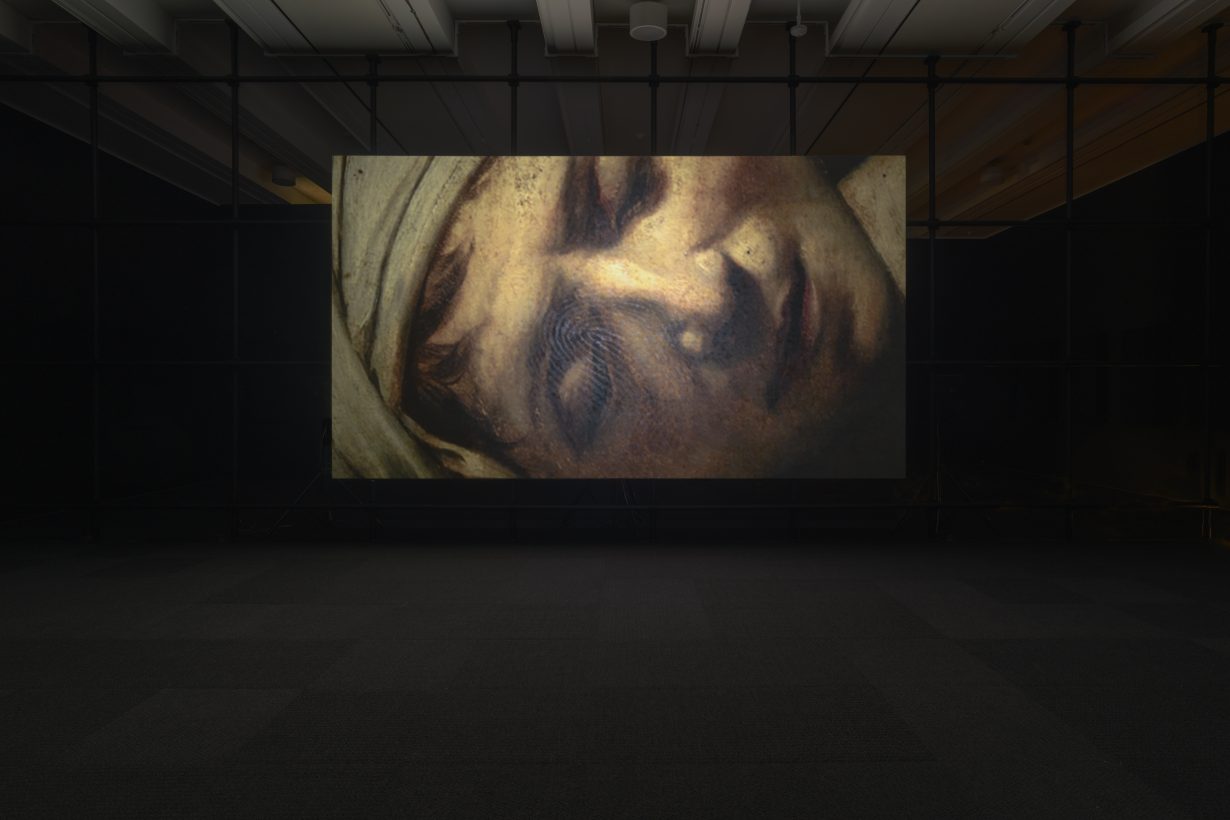A Solid House at Aspen Art Museum explores, in a rare video installation, the ways in which external phenomena dictate our lives
Sanya Kantarovsky is best known for his paintings, which tap into the cruelty and contradiction of everyday life with cartoonish types that become screens for our own pathetic and shameful projections. This show’s only work, a rare video installation from Kantarovsky, revolves around a monkey-like protagonist who has a fixation with another type of painting: Jacques-Louis David’s The Death of Marat (1793). David’s canvas famously made a martyr of Jean-Paul Marat, a radical French politician who was murdered in his bath. A Solid House (2022) opens by panning over a printed reproduction of the painting, which is awash with the creature’s fingerprints.

A Solid House explores, a bit circuitously, the ways in which we obsessively align ourselves with external phenomena – flattering images, tasteful objects, laudable ideologies – that declare us to be wholly just, disciplined, cultivated or good: an ego-driven undertaking that is absurd in light of reality’s complexities and incongruities. Museumgoers follow a path of battery-operated tea lights in a dark enclave to a preposterously long couch. From there, they encounter the 12-minute video, which intercuts 16mm film depicting tranquil nature scenes with h d video of a bourgeois home with aspirational trappings such as luxury-brand candles and coffee-table books. Its lone occupant, a hirsute computer-generated simian, handles a raw egg, runs his finger along a water glass’s rim and presses his snub nose against the window.

“He is a captive monkey in an empty house,” says a voiceover. “It is a solid house.” The narration comes from Chögyam Trungpa’s lecture series given in Boulder during 1970–71. The scandal-ridden spiritual teacher allegorised ego development by describing a primate who, in attempting to form a coherent picture of himself and his world, ‘attach[es] values to things and events which they do not necessarily have’. Eventually, Trungpa declares, this monkey enters a disturbed state in which mere acknowledgement that his reality is fabricated enrages him.
Late in the video, the creature, presumably galvanised by The Death of Marat, turns an expensive camcorder onto himself and slips into the bathtub, where he watches air strikes (US actions in Afghanistan, the exhibition text explains) on an iPad. This jarring scene highlights the violence regularly deployed to sustain constructed, frequently delusional worldviews and concomitant illusions of moral superiority – an impulse that also underlies The Death of Marat (David’s idealising depiction of Marat advanced the brutal Reign of Terror). Acknowledging this truth is unbearable; the simian’s domestic fictions cannot hold. We watch the built world of the film – a world perhaps not so different from the viewer’s – splinter into abstract closeups and screeching sounds, its fundamental flimsiness exposed as it falls apart.
A Solid House at Aspen Art Museum, through 2 April
